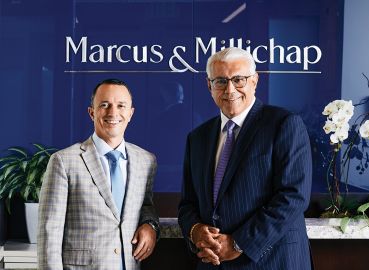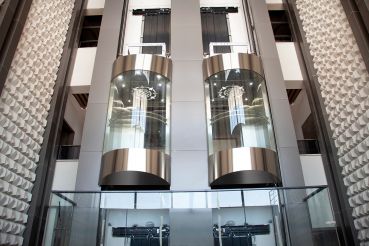Bio-Cement Approaches Its Moment Behind Prometheus Materials
Colorado startup’s microalgae-based cement can certifiably reduce concrete carbon emissions
By Philip Russo February 28, 2023 7:20 am
reprints
Cement production accounts for 8 percent of annual CO2 emissions and consumes 9 percent of annual industrial water on a global basis, making reducing cement’s impact on climate change a huge challenge and opportunity for proptech and contech.
That’s where Prometheus Materials and its algae come in.
The 2-year-old Boulder, Colo.-based startup hopes to provide the construction industry with a sustainable alternative to carbon-intensive Portland cement.
In January, the sustainable materials company secured ASTM (formerly known as American Society for Testing and Materials) nonload-bearing and load-bearing concrete masonry units (CMUs) certifications for its bio-cement product. The company expects that the certifications — which confirm that a concrete masonry product meets minimum performance requirements — will help it launch full-scale production in the second quarter of 2023.
Although Prometheus Materials plans to launch its product in the second quarter, a spokesperson for the company declined to comment on what post-launch projects it will undertake.
The Prometheus Materials product doesn’t replace anything in the cement-making process, said Loren Burnett, president, CEO and co-founder of Prometheus Materials. Instead, it uses a different material than more conventional Portland cement and Portland cement-based concrete, Burnett said.
“The characteristics of our material are such that it enables us to basically be an ultra-low-carbon alternative material to Portland cement,” he said.
Unlike other biomaterials companies servicing construction firms, Prometheus produces an especially low-carbon product that is an alternative to concrete building materials, according to a company spokesperson.
Prometheus Materials was first conceived about four years ago when the U.S. Department of Defense wanted to see if there was a way to use living materials to create hardened structures in the middle of what are known as “resource-deprived environments,” said Burnett. “That’s Department of Defense-speak for in the middle of the desert somewhere. They couldn’t fly in concrete, because it’s too heavy. And they didn’t want to truck it in over long expanses of desert or potential hostile territory.”
The DOD wanted to build structures for protecting helicopters and jets by using living and local materials, eventually working with four professors at the University of Colorado to grow and use algae and put it through a biomineralization process. Nature uses a similar process to spawn seashells and coral reefs.
The University of Colorado, which owns the technology, wanted to bring on an embedded entrepreneur to help take the technology from the university labs to an ongoing company, ultimately hiring Burnett, he said. (It’s the latest example of the symbiosis between universities and proptech firms.) The university owns the patents, which Prometheus Materials licenses from the school. The terms of the license agreement are confidential, said a company spokesperson.
As concrete is the second most used material on earth, behind only water, the process of making it more sustainable is a huge task.
In contrast to traditional Portland cement, Prometheus Materials’ microalgae-based bio-cement emits little to no CO2 and recycles 95 percent of the water used during its production, according to the company. When mixed with aggregate, its bio-cement forms an ultra-low-carbon bio-concrete that offers mechanical, physical and thermal properties comparable — or, in some cases, superior to — Portland cement-based concrete.
Prometheus Materials’ bio-concrete-making process avoids CO2 release “every single step along the way,” Burnett said. “The real cause of the carbon and the CO2 problem with concrete is that virtually every step in making cement causes massive amounts of CO2.”
Traditional cement-making involves using hydrocarbon mining equipment to mine limestone, transporting the heavy limestone to the cement factory using gasoline and diesel-powered trucks, and then putting it in an industrial kiln that uses fossil fuels to heat the limestone and other ingredients up to 1,500 degrees Celsius. That causes a chemical reaction that releases yet more CO2, explained Burnett. The cement then is transported to a concrete factory, using more fossil fuels.
“The way that we make a difference from a CO2 perspective is we avoid and then we sequester,” Burnett said. “Our bio-cement is made at ambient temperature and ambient pressure with natural ingredients. The sequester piece is that we use microalgae, which we then stimulate in a process called biomineralization. The algae and the biomineralization sequester [the CO2] into our long-term building products.”
The announcement of Prometheus Materials’ multiple ASTM certifications follows the company’s recent announcements of the appointment of architect Vishaan Chakrabarti, a former New York City planning official, to its board of directors, and a partnership with Skidmore, Owings & Merrill (SOM), a nearly 90-year-old architecture firm whose credits include numerous skyscrapers.
“The future of sustainable building solutions is here,” Chakrabart said in a statement. “With key certifications achieved, I’m hopeful that Prometheus Materials’ product will be deployed at scale in the near future, serving as a major replacement of the carbon-intensive concrete we know today.”
Philip Russo can be reached at prusso@commercialobserver.com.


